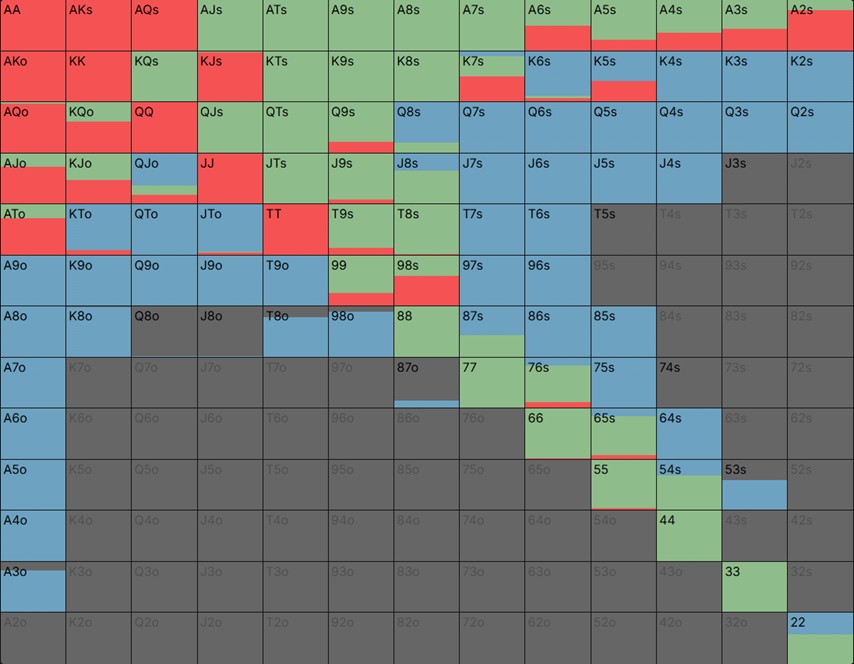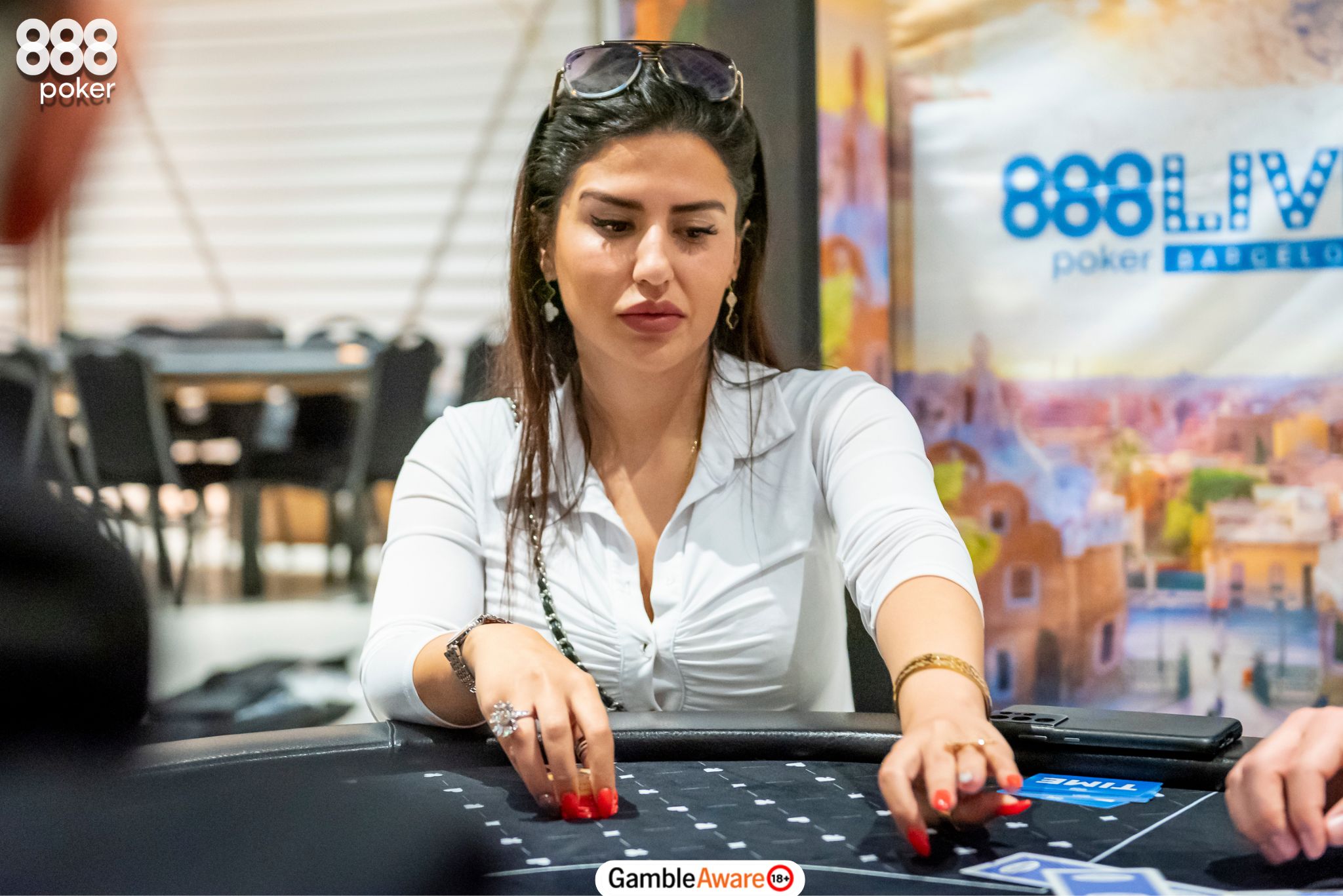Our Small Blind (SB) open raise gets 3bet by the Big Blind (BB)? Now what?
This poker spot is especially tricky because we often have a wide range and know that we’ll be out of position if we choose to defend.
On the flip side, the BB is supposed to 3bet almost 20% of holdings, so we don’t want to give up too easily.
Let’s see what theory says regarding this tricky spot in Texas Hold’em.
SB 3x vs BB 9bb 3bet
Let’s imagine we open raise to 3bb from the SB and face a 9bb BB 3bet.
According to GTO poker theory, our defending frequencies should look similar to the following:
- Call ~26.2%
- 4bet ~20.8%
A key to playing this spot well is understanding that we should be reluctant to flat 3bets out of position.
Now, this fact doesn’t mean we don’t flat. If we purely consider defending hands, we 4bet around 44% of the time and call 56% of the time.
We are still flatting slightly more than we 4bet, but it’s close.
Now let’s compare the numbers for a BTN 2.5x vs 11bb 3bet. We open the BTN now, rather than the SB.
- Call ~33.9%
- 4bet ~11.5%
Purely looking at the defending hands, we 4bet around 25% of the time and flat around 75% of the time.
Ignore what any poker hand cheat sheet has to say; flatting is much more crucial when we have position!
Although we still have a flatting range OOP, it accounts for a smaller component of our overall defending strategy.
Concisely put, it’s not that great to be out of position (OOP) as the caller in a 3bet pot, even though we still have a calling range.

Defending Strategy
Our 4betting strategy is split into value hands and semi-bluffs:
Our value 4bet region is as follows –
- TT+, AQ+.
Our semi-bluff region is as follows –
- Off-suit broadways - AT-AJo, KJ-KQo
- Suited broadways. (KJs, but the suited broadways mostly flat)
- A2-A6s, K7-K5s
- Occasional suited connector
A simple heuristic to remember is that suited broadways are strong enough to flat call in this blind vs blind formation. So, many of our semi-bluffs are off-suit broadways instead.
This leaves our calling region as follows -
- Pocket pairs 99 and below.
- Suited broadways, including those with a 9x.
- Axs (especially the middling Axs like A9s)
- Suited connectors (but these are marginal, due to not having a high card in the hole).
Villain Specific Adjustments

We should consider the two following tendencies when establishing whether we should deviate from a theory-based defence:
1. Fold to 4bet –
If our opponents’ fold to 4bet is noticeably above 50%, we can 4bet more aggressively as a semi-bluff. If the folding frequency reaches 60% poker probability, we can 4bet bluff with any two cards (although that doesn’t mean this is always the best approach).
On the other hand, if our opponent’s fold to 4bet frequency is lower than 40%, we should consider strengthening the semi-bluff region, or cutting it out entirely, in favour of an extended value range.
2. 3bet Frequency –
If our opponent is 3betting tighter than the theory-based frequency (which is often the case), then we should consider tightening our defending range.
However, this is often offset by the fact that our opponent is making postflop mistakes. So, we can defend close to a theory range, even if our opponent is 3betting quite a bit tighter than solver.
Even as we wrestle with our response to getting aggressively raised OOP vs BB, we can temper it by following these tips on handling aggro players betting IP.


